London, UK: My increased interest in Islamic motifs (triggered by the Story of Islamic Embroidery exhibition at the Emirates Palace hotel Abu Dhabi last year), found me in the Jameel Art Gallery, part of London’s Victoria and Albert Museum. Actually I had come looking for the winner the Jameel Art Prize 2011 showpiece, and was rewarded with this huge art gallery of fantastic pieces of Islamic art and architecture of the bygone era.
The above is a pulpit, which, for those who were raised in the UAE, was a familiar site where the sermons were delivered every Friday at noon. From a distance it seems that the pulpit was carved from one piece of wood. Upon closer inspection (and this is what I noted from the description next to this piece) is that the panels are put together from small pieces of previously shaped wood. Yes, the pulpit is made from wood. The name of a particular ruler named Sultan Qa’itbay (ruler of Egypt from 1468-1496) has been included in the inscriptions.
Behind the pulpit is the next piece of work that I found quite decorative and intriguing. The photo is shown below, and the tiles, it seems belongs to the tomb of Buyanquli Khan, who was the puppet ruler over parts of Central Asia (we are talking around the 1350’s here).
The special technique used here started with the carving of the tiles with inscriptions and other ornaments, coloured glazes applied before the piece was fired.
Here is another tile, originated from Turkey in the 17th century. You can see the Ka’bah from a bird’s eye view. This tile was made from fritware (which according to the dictionary means Islamic stone paste where frit which has a ceramic composition is mixed with clay), which has been painted and then glazed.
Apart from intricate carvings, I love calligraphy. The text from the Qur’an seen in the above picture has been written in gold and the vowel signs added in blue. The leather binding was over pasteboard.
When I first saw this piece, I marveled at the intricacy of the work. This is called the beggar’s bowl, used by Islamic mystics in the 1800’s. There are various verses from the Qur’an as well as prayers that have been inscribed onto the bowl. It is made from the fruit of the coco de mer palm.
We are back to tiles, this time a tilework chimneypiece, used in Turkey. Another example of fritware, painted before being glazed.
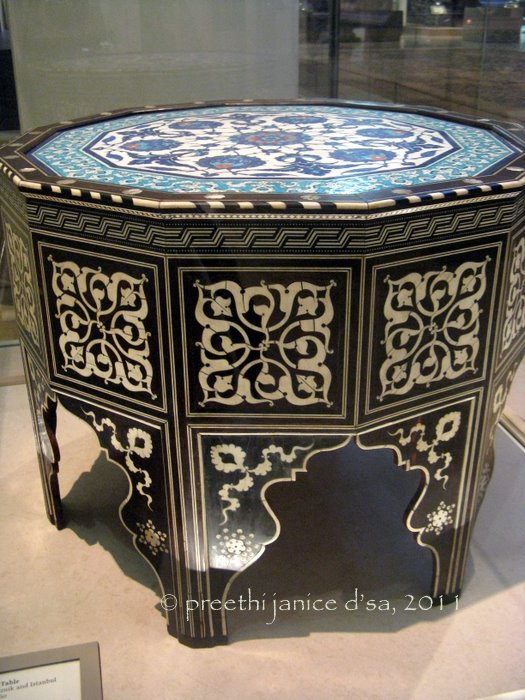
One of my favourite pieces from the Jameel Art Gallery. A low rise table. Photo © Preethi Janice D'Sa
Tiles on the table top, again from Turkey. Here the table is made of wood, laced with ebony and inlaid with ivory and mother-of-pearl. It is, of course, a very low table, because the guests in the days of 1500’s sat on low diwans (sofas).
After the visit to the Jameel gallery, a breath of fresh air in the Victoria and Albert courtyard was inevitable to reflect on what the greatness of artwork I had seen. While reflecting, I was moved to do a quick sketch of the courtyard, as below, before making my way in to view the finalist showpieces of the Jameel Art Prize 2011.
And here questions of type such if honestly strike me not much as I wrote everything higher. It is visible you simply you don’t want to read all this. As my parrot does.



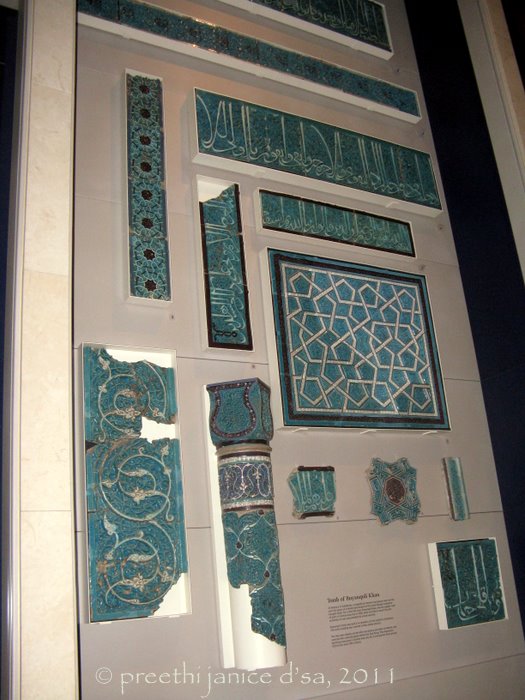

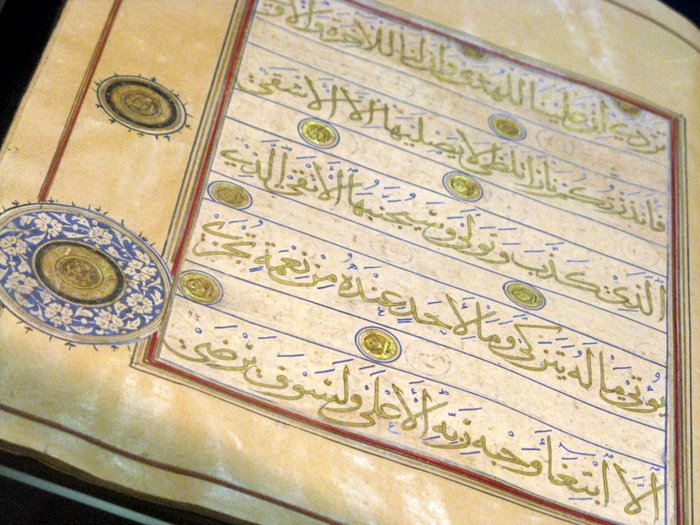

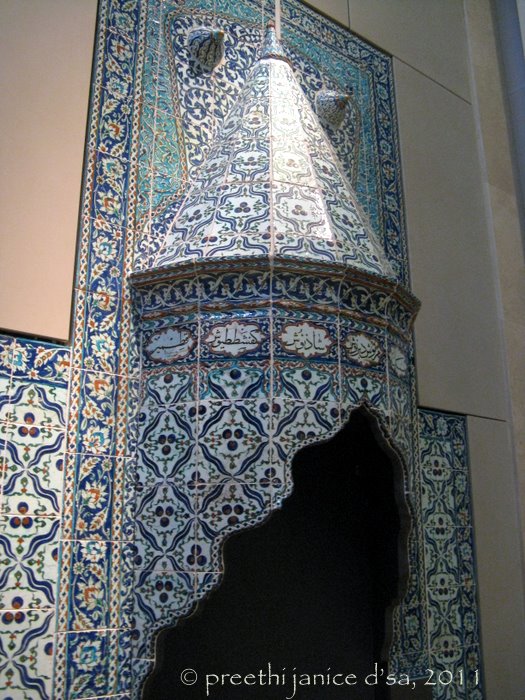

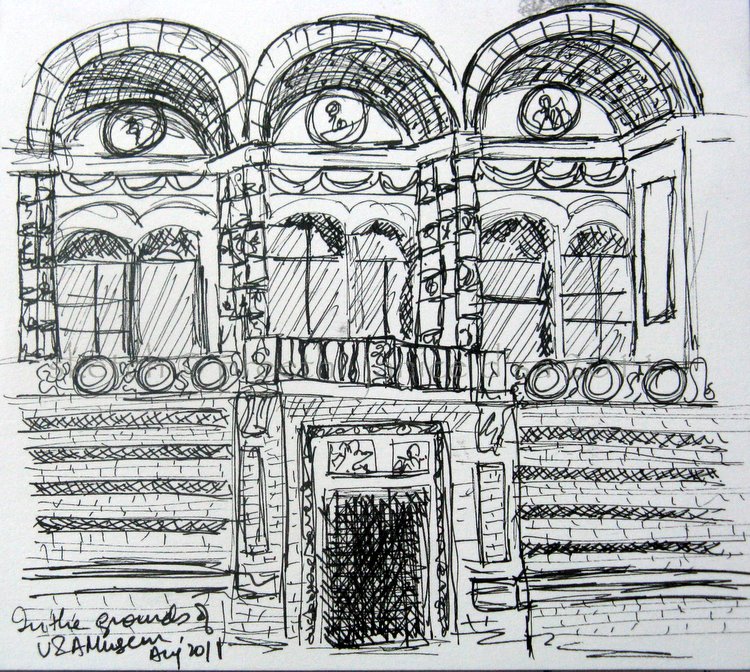
[…] their inspiration could be something very different. My inspiration is mostly driven by my love for Islamic architecture and […]
hi ,i also do some artistic work.i love to make hand made things.i made one wooden peacock decorate it with pearl and ceramic powder.it’s a wall hanging key holder.i want to sell it ,if u r interested pls let me inform then i will send some pictures also.thanks
Dear Geeta, do you have a website that I can have a look at your work? Thank you.